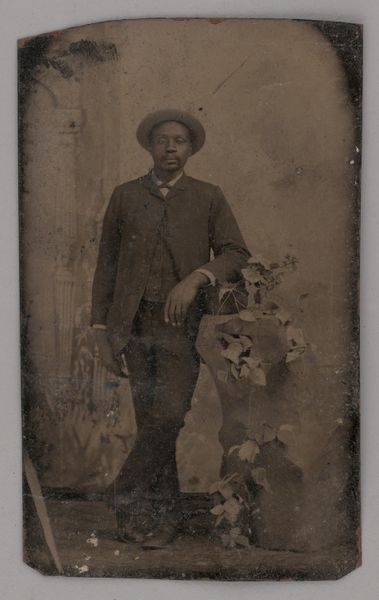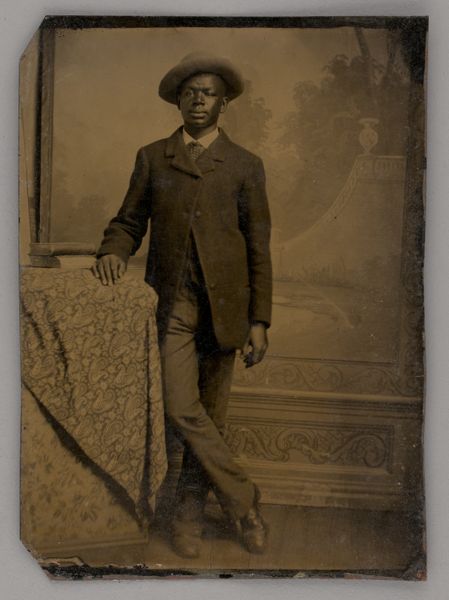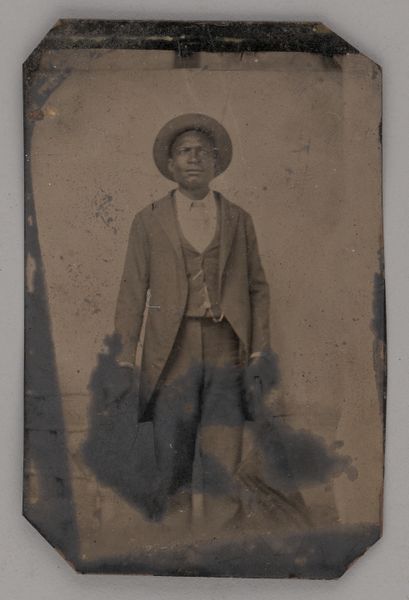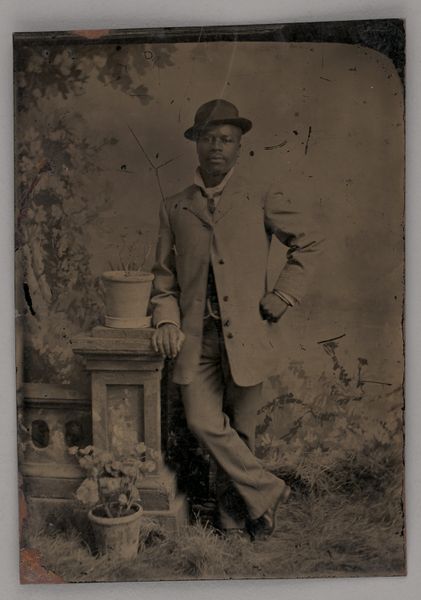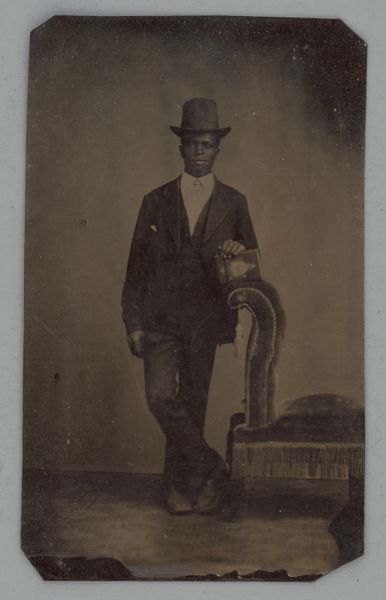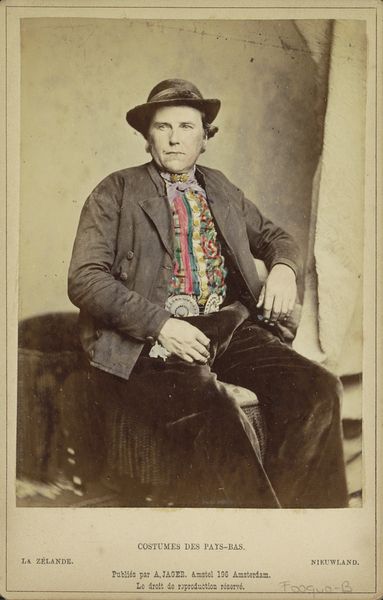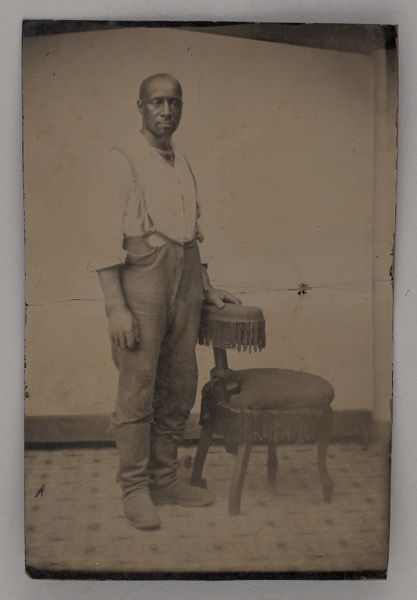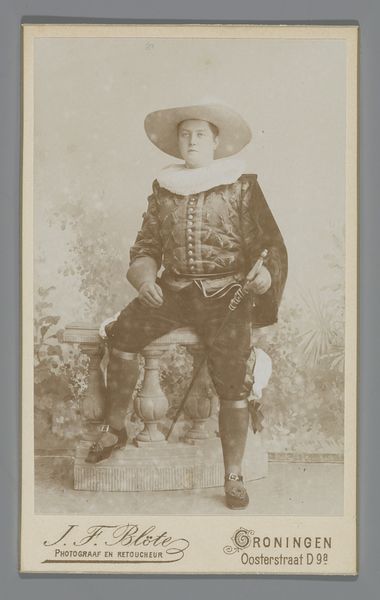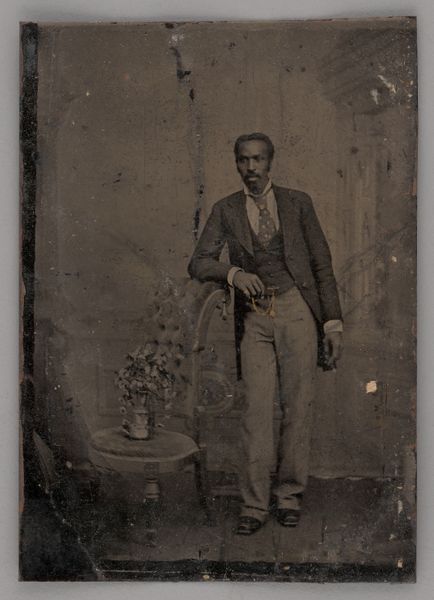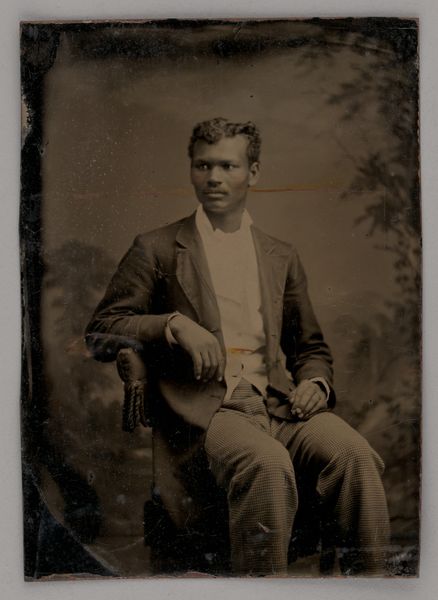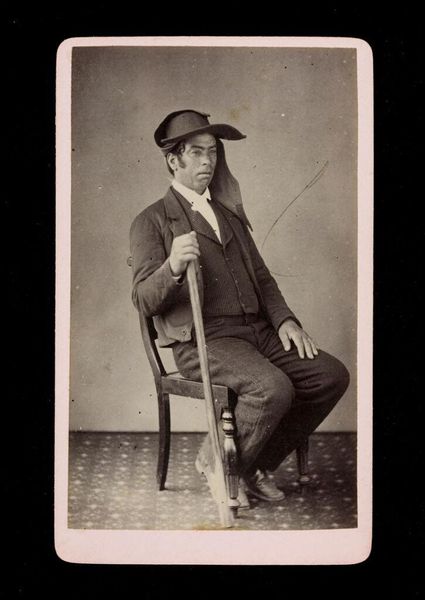
photography
#
portrait
#
african-art
#
16_19th-century
#
photography
#
men
#
united-states
#
realism
Dimensions: 10 × 6 cm (4 × 3 in., plate); 11 × 8.5 cm (card)
Copyright: Public Domain
Curator: This is an 1880 photograph, currently attributed to an anonymous artist, held at The Art Institute of Chicago. It’s known as Untitled (Portrait of a Seated Man). Editor: It strikes me as remarkably self-assured, almost confrontational. He seems very conscious of the viewer. The muted tones lend a kind of gravity, too. Curator: Yes, and note how the composition reinforces this. The subject's direct gaze, his seated pose with legs crossed, suggests a conscious presentation of self. How do you read that through a historical lens? Editor: I immediately think about agency, about the historical context of photography, particularly for African Americans. The act of having one's portrait taken was a deliberate act of self-definition. Considering post-Reconstruction America, and pervasive racist caricatures, it's fascinating to consider how photography could become a form of resistance, offering dignity and self-representation. The portrait thus becomes a subtle commentary on visibility and power. Curator: Exactly. Let’s examine the structure further. Note the central placement of the man. This is very formal. Semiotically speaking, his clothing reads as educated and economically stable—though clearly not wealthy. How does the light emphasize or challenge the subject’s apparent status? Editor: Light emphasizes his face, offering the viewer no opportunity to overlook the sitter’s race. It’s hard to ignore how access to portraiture—historically, it was largely exclusive. This image, though technically "realistic," enters into a very political debate simply through the subject of the portrait. He exists; he takes up space; he declares "I am". Curator: A very powerful interpretation, I think. Analyzing its form and historical context reveals far more than just a picture. It shows social structures and cultural struggles embedded within it. Editor: Precisely. It’s these complex relationships between the artwork and its world that continue to fascinate me, driving home that art rarely exists in a vacuum.
Comments
No comments
Be the first to comment and join the conversation on the ultimate creative platform.
